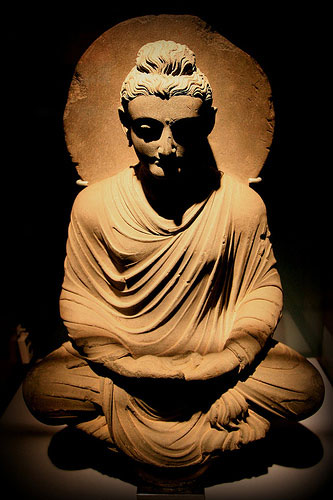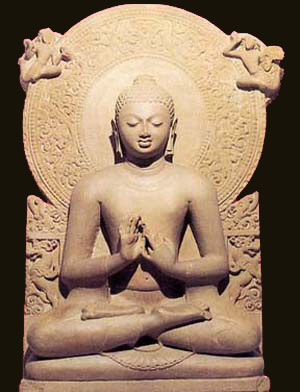ART AND CULTURE : BUDDHA IMAGES
A Buddha image is not only a symbol of the historical person but the human qualities that he perfected; compassion, wisdom, patience, generosity, kindness, etc. Worthy of bowing down to.

Buddha images in human form appeared much later than the construction and worship of stupas and other symbols. His presence was originally indicated by footprints, by a standing woman (his mother) representing his birth, a tree the Enlightenment, a wheel the Doctrine and the First Sermon, and the stupa his death. The lack of human cult images until the last centuries BCE was common to all classical Indian religions. Putting a date and a place of origin for the first images is difficult but it is generally agreed that it was in the last century BCE – about 500 years after the Buddha’s death. The earliest images are either in the Mathura style of central India or the Gandhara style of what is now Pakistan and Afghanistan.
• It was once agreed that when Gandhara was ruled by Greeks from Alexander the Great’s colony in Bactria (northern Afghanistan), Greek influence inspired the Buddhists of Gandhara to create the first Buddha image. This proposition was contested and a compromise view is that the Buddha image evolved in both centres independently and more or less simultaneously in response to a growing devotionalism in Indian religion. The majority of surviving ancient images display the Gandhara style.
• The Gandharan images showed the Buddha standing or seated, his robes in the Graeco-Roman tradition of drapery in more or less realistic folds. The hair was usually in wavy lines and the Buddha’s cranial bump was a bun. Comparisons were made with the Greek ‘Apollo’.

• The standing Mathura Buddha was thick-set, copying the popular nature spirit of the time but wearing monastic robes with the right shoulder bare. Another posture is that of the seated yogi with crossed legs (full lotus) and hands laid in the lap, though sometimes, as more commonly with standing figures, the right hand is raised. The robes, worn over the left shoulder and arm, cover part of the chest and most of the lower part of the body. On the head a twisted coil of hair or bun corresponds to the later cranial bump.
• Early Mathura Buddhas have been found in Gandhara while Gandharan influence on Mathura appears late, so it can be concluded that the first Buddha images were in the Indian Mathura style.
• A coin of king Kaniska (CE 100) top-left, shows a standing Gandharan style figure with the Bactrian inscription ‘Boddo’. This is the earliest datable image of the Buddha and its use by Kaniska supports scriptural references to his involvement in Buddhism; the errection of several monuments and his assembling the third council in Kashmir. The naturalistic hairstyle persisted on the Gandharan images whereas Mathura began to represent the Buddha with ‘snail shell’ curls turning to the right – this style eventually prevailed.
• The Gandhara style produced a vast number of images and narrative reliefs between the first and sixth centuries CE. These were initially in stone and later in stucco, using moulds to multiply images (in the interests of increasing merit?).

• At Mathura the ‘native’ Indian style continued to produce sturdy, outward-looking images. Under the Gupta dynasty (320-550 CE) images were refined to a classical perfection which still reflected the robust qualities of the earlier style. A related school at Sarnath developed a spiritually reflective style with subtle, smooth modelling. This gradually became probably the most influential model within India and beyond. The bottom thumbnail is a particularly beautiful example of this style (linked to an enlargement and head detail).
Source buddhamind.info





Comments are closed.